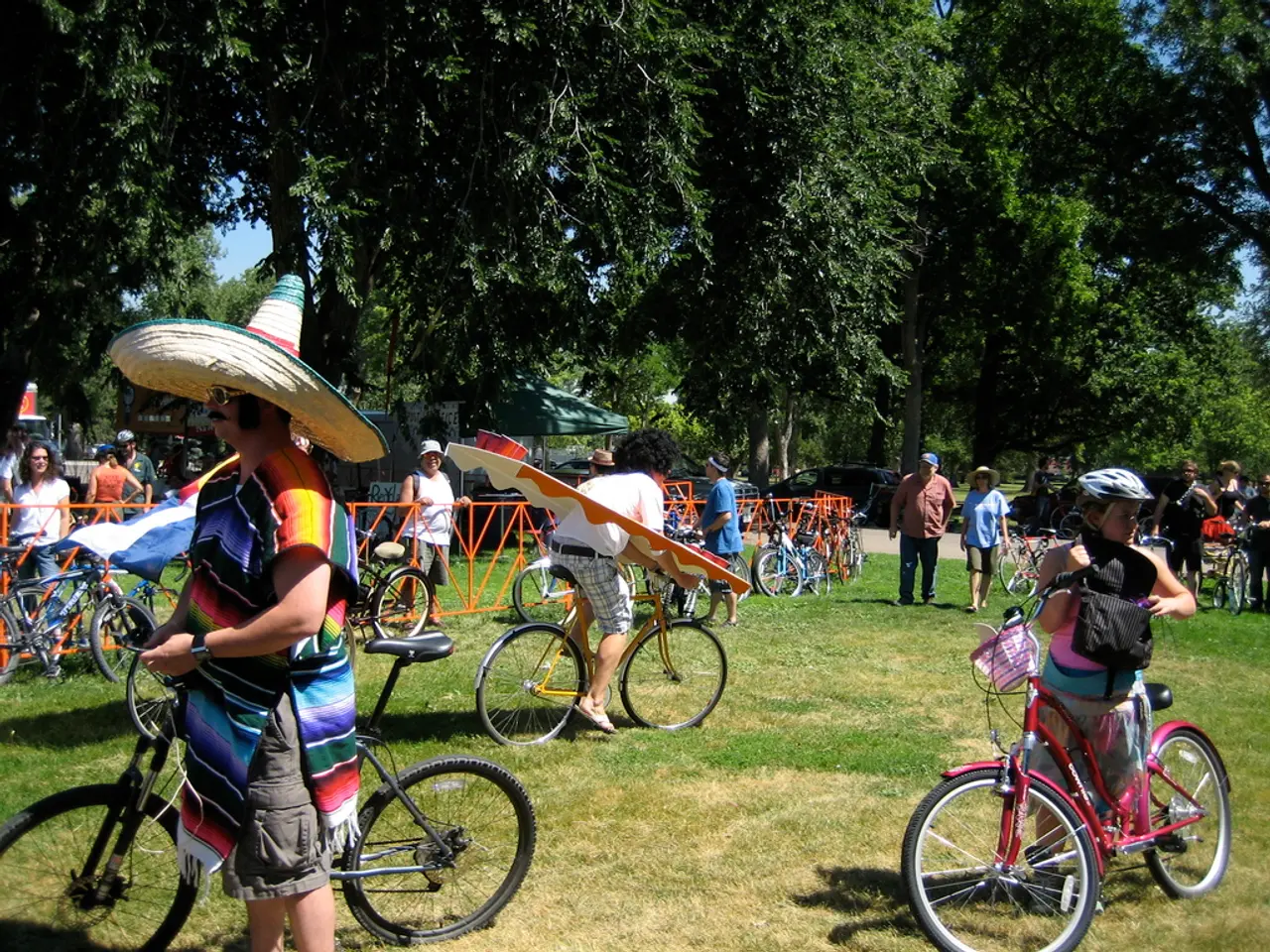National Park Expedition Via Electric Bicycle
In the spirit of adventure and discovery, more and more people are turning to electric bikes (e-bikes) to navigate the scenic trails of national parks. However, it's crucial to remember that each park has its own set of rules and regulations to ensure safety, respect wildlife habitats, and minimise environmental impact. Here are some key tips to help you make the most of your e-bike adventure while staying within the park guidelines.
### Safety Tips for Riding an E-Bike in National Parks
1. **Observe Speed Limits**: Most bike paths in parks have posted speed limits, typically around 15 mph. Adhering to these limits helps protect pedestrians and other cyclists.
2. **Follow Traffic Rules and Yield**: On park roads, obey all traffic regulations. Always yield to pedestrians and traditional cyclists to avoid accidents.
3. **Throttle Restrictions**: Throttle use is often restricted to roads open to motor vehicles. On bike paths and trails, pedal-assist mode is usually required.
4. **Avoid Prohibited Areas**: E-bikes are typically banned from backcountry hiking trails, wilderness areas, boardwalks, and sensitive environmental zones. Look for signage indicating where e-bike use is prohibited.
5. **Wear Proper Safety Gear**: Helmets are recommended everywhere and sometimes required. Carrying a first aid kit, emergency supplies, and protective equipment such as bear spray in parks with wildlife is advisable.
6. **Respect Wildlife and Trail Users**: Avoid startling animals and respect wildlife corridors. Ride cautiously in areas where animals nest or during sensitive seasonal periods.
### Efficiency Tips for Riding an E-Bike in National Parks
1. **Plan Your Route and Battery Use**: Calculate distances and plan for at least 20-30% battery reserve. Identify locations such as visitor centers that may offer charging facilities, as charging opportunities in parks can be limited.
2. **Consider Dual Batteries for Long Rides**: Some e-bike models offer dual batteries for extended range, reducing the need to stop for charging during your ride.
3. **Carry Maintenance and Repair Tools**: Bring a tire repair kit, multi-tool, chain lubricant, and spare tubes to address common mechanical issues in remote areas.
4. **Use Navigation Aids**: Carry a park map and GPS device to stay on approved trails and avoid restricted zones, ensuring compliance and efficient route tracking.
5. **Respect Trail Conditions and Environment**: Ride only on established trails to prevent erosion and habitat damage. Adhere to "Leave No Trace" principles by packing out all waste and avoiding damage to vegetation and soil crusts, especially in sensitive desert or fragile ecosystems within parks.
6. **Prepare for Varying Conditions**: Depending on the season and weather, start rides early to avoid peak heat or trail congestion, and bring appropriate clothing and hydration.
By following these tips, you'll be well-prepared for a safe, efficient, and enjoyable e-bike adventure in national parks, all while minimising environmental impact and complying with park regulations. Happy trails!
- E-bikes are increasingly popular for exploring the terrain of national parks, allowing travelers to journey into wilderness areas with ease.
- During your e-bike trip in a national park, always consider the safety of wildlife, respecting their habitats and behaviour as part of your exploration.
- For an adventure in parks, it's essential to be aware of the rules and regulations specific to each park to ensure a respectful experience and a minimal impact on the environment.
- Parks often have speed limits on bike paths, so make sure to explore at a moderate pace to protect pedestrians and other cyclists during your journey.
- Always follow traffic rules and regulations, as well as yielding to pedestrians and traditional cyclists on park roads to prevent accidents.
- Throttle use might be restricted to roads open to motor vehicles, so be sure to use pedal-assist mode when taking trails in national parks.
- Avoid prohibited areas such as backcountry hiking trails, wilderness areas, boardwalks, and sensitive environmental zones when riding an e-bike in parks.
- When going on an e-bike adventure, wear appropriate safety gear, including helmets, and carry a first aid kit and emergency supplies for peace of mind.
- As a hiker on an e-bike, respect trail users and wildlife, riding cautiously in areas where animals nest or during seasonal sensitive periods.
- To maximize your e-bike's efficiency in national parks, plan your route and battery use carefully, considering distances and battery reserves.
- Some e-bike models come with dual batteries to offer extended range during long rides, reducing the need to stop for charging.
- Carry maintenance and repair tools, and use navigation aids like maps and GPS devices to stay on approved trails and avoid restricted zones.
- Adhere to "Leave No Trace" principles while riding, ensuring you respect trail conditions, the environment, and minimize your impact on national parks for the benefit of outdoor-living enthusiasts and future generations.




